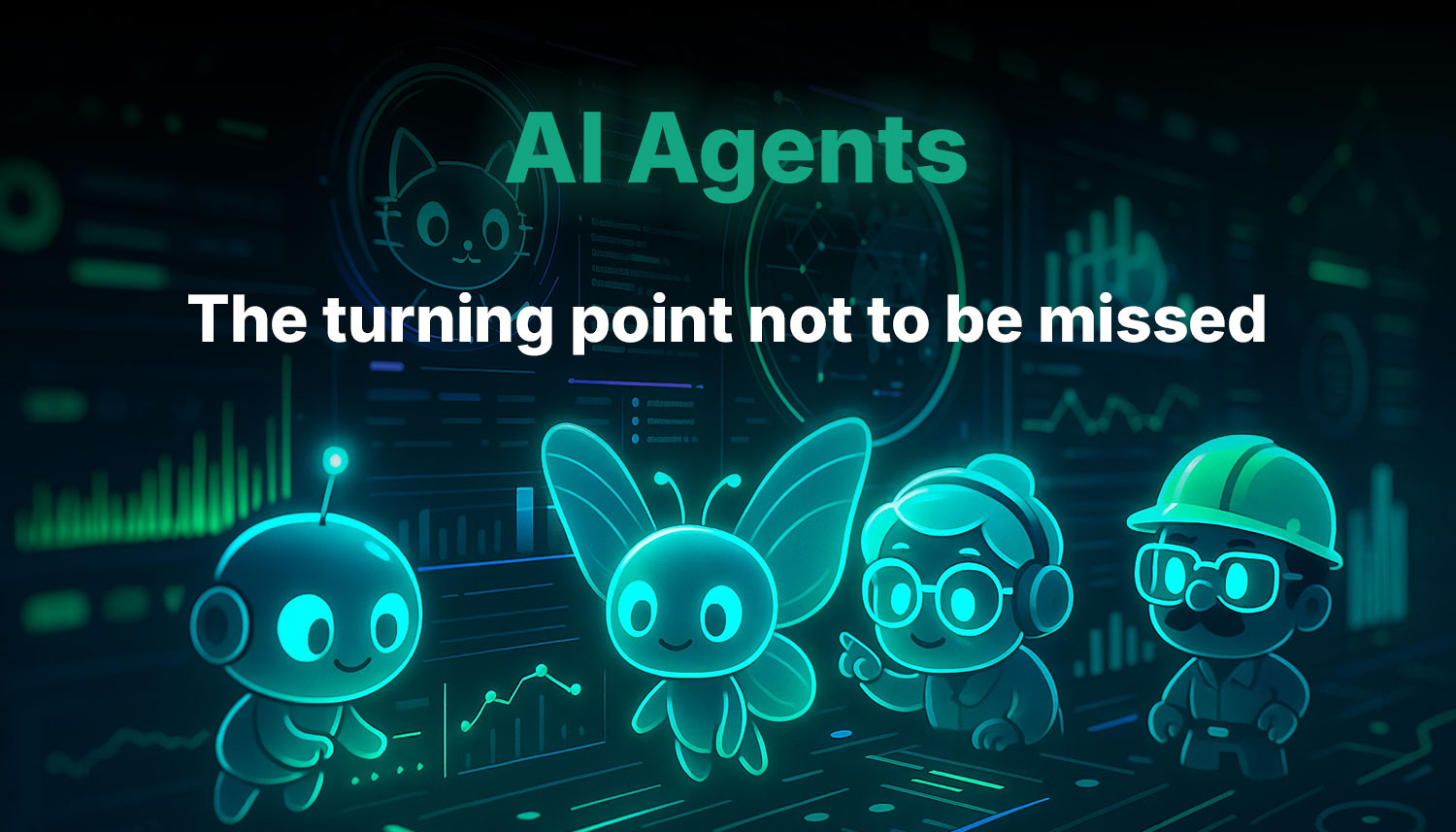
AI Agents explained
Welcome to the Age of Agents
“Agents are causing (…) the greatest revolution in computing since we moved from typing commands to clicking icons.” – Bill Gates.
For the past few months, AI agents have been on everyone’s lips: conferences, articles, demos – there’s no escaping them. Touted as the next big wave of artificial intelligence, they spark excitement, curiosity and sometimes confusion.
But what exactly are these agents? Why is everyone talking about them, and how can they really change the way we work, create or collaborate?
To clarify things, we’re sharing our expert view on agents and why their rise deserves your attention — no hype, just plain-language explanation.
Welcome to the age of agents!
The AI Agent: quiet, yet already on a mission
What are you hiding under that cover?
A n AI agent is an intelligent system able to perceive its environment, reason about it and then act autonomously to achieve a goal.
What sets an AI agent apart from a conventional program is its ability to grasp an overall objective and organise itself to meet it.
Where a traditional AI executes a specific task on command, the agent handles the entire process: it analyses the request, draws up a plan, picks the right tools, acts, then adjusts based on the outcome — a true intelligent assistant.
Proactive: able to anticipate and adapt
Autonomous: capable of making decisions without supervision
Reactive: alert to its environment and any changes
Social: interacts with humans, other agents or neighbouring systems
Already present in our daily lives in the form of software or physical robots, they power conversational agents such as ChatGPT and even voice assistants like Gemini.
J.A.R.V.I.S. in Iron Man suddenly doesn’t feel that far away!

The brain of the operation
If AI agents are attracting so much attention today, it’s thanks to advances in the technologies that power them — in particular large language models (LLMs ; see our dedicated article).
Driven by this model, the LLM agent gains new abilities: understanding and expressing itself in natural language, interacting with tools and even collaborating with other agents. No longer confined to closed or highly technical scenarios, it can be briefed by anyone.
LLMs have thus turned agents into assistants that accompany us every day — and this is only the beginning…
Operating mode of an elite agent
1 – Perception
Perception enables the agent to observe and interpret its environment, whether real or virtual.
It can rely on various kinds of input: text, images, sound or even sensory signals such as touch in robotic systems.
An agent checks inventory: “The stock of shipping boxes is almost empty.”
It then looks at current order levels and shipping forecasts.


2 – Memory
Memory allows an agent to follow a conversation over time and adapt to the user. It keeps track of what has been perceived, understood or achieved.
Short-term memory, active during the exchange, is useful for keeping track of the conversation thread and adapting to the immediate context.
Long-term memory stores persistent elements such as user preferences, history or the broader context.
The challenge for such systems is not just storing data, but choosing what to keep. Too much information slows or confuses the agent; too little and it loses relevance.
In this case, the agent remembers the usual supplier, delivery times and also the restocking strategies that have worked in similar situations.
3 – Reflection
The agent goes beyond executing orders; it achieves a goal strategically and autonomously.
It starts by understanding the situation: What is the intention behind the request? What is the context? What role should it play?
From there, the agent moves to planning: it can break down a complex task into simpler subtasks, explore several scenarios in parallel to determine the optimal solution, or even delegate planning to an external tool.
Memory also plays an important role in this process; an agent able to remember a previous strategy can reuse and adapt it without starting from scratch.
The required quantity is estimated based on the activity pace. A comparison between suppliers helps choose the most reliable option in terms of cost and lead time.


4 – Action
The agent selects the necessary tools and performs the tasks:
Text output is the most common and visible to the user. The agent drafts a reply, explains a process or offers a recommendation in natural language.
Embodied action concerns acting in a real or virtual environment. It can move, manipulate an object or control a robot or avatar.
Tool use lets the agent rely on external services to accomplish a task: querying a database, running code or launching a web search.
If needed, it waits for supervisor confirmation to place a restocking order and updates the reception schedule.
5 – Result evaluation
Finally, the agent assesses the effects of its action and, if necessary, adjusts its strategy.
The order is tracked until it is received. In the event of a delay or discrepancy, a fallback plan is proposed and an alert is sent if human intervention is needed.
The AI agent’s secret gadgets
An agent skilled in infiltration
One of the great strengths of LLM agents is their ability to take on roles. They can adjust their language, priorities and reasoning style to the mission they’re given — even following precise instructions such as banning certain words or adopting a specific tone. Each agent is usually specialised for a specific mission, with a stance, language and sometimes tools tailored to its role.
For example, you can tell an agent: “You’re an HR recruiter, help me prepare for a job interview.” The agent then adopts a professional tone, offers typical questions and simulates mock interviews. Another agent, designed as a manager, will have a different objective: ask targeted questions, run role-play situations and provide structured feedback.
So the agent doesn’t just perform a task: it understands which role to play to do it better.
More than one trick up its sleeve… or in its toolbox
When a task exceeds what an agent can handle on its own, it can rely on external tools, called tools, to extend its reach.
Physical tools:
They allow the agent to act in the real world, for instance by controlling a robotic arm, driving an autonomous vehicle or monitoring sensors and other connected objects.
Graphical tools (GUI):
Here, the agent interacts with software interfaces, using the computer like a human. It clicks, fills in forms, browses the web and uses applications such as Microsoft Office or Photoshop.
Programmatic tools:
The agent converses directly with programs often used by developers. This lets it run code, query databases and manipulate servers.
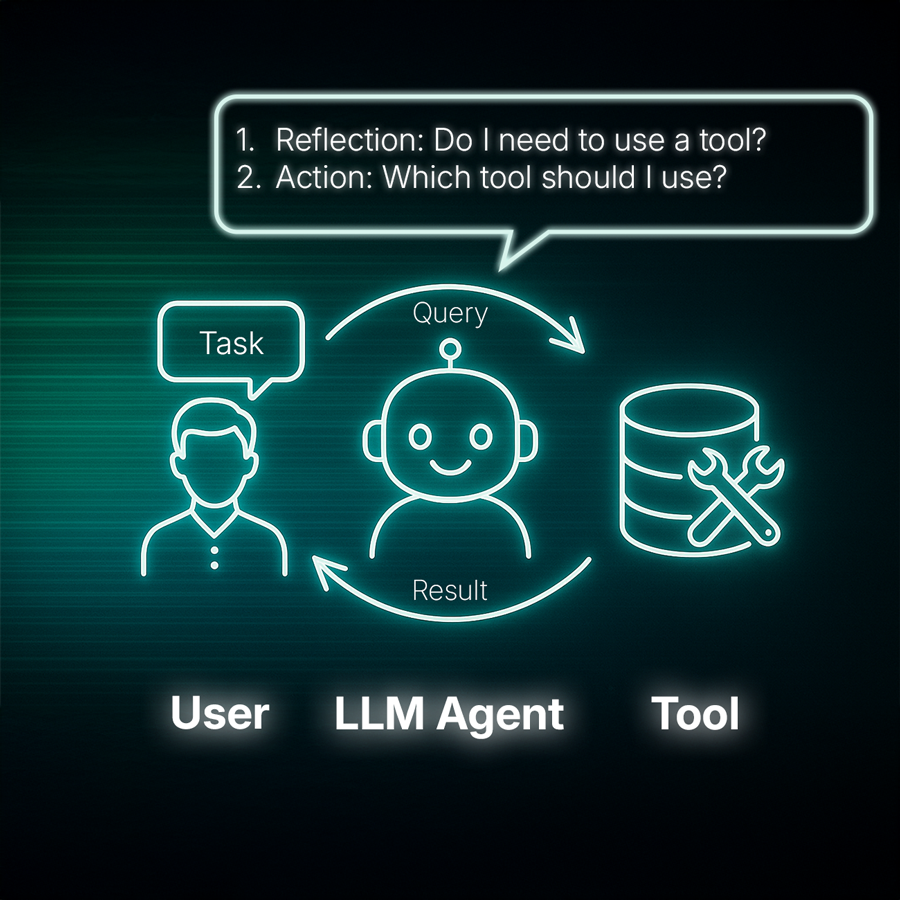
Mission in 3 steps: Model, Context, Protocol
The MCP (Model Context Protocol) is a standardized protocol that lets an AI agent easily connect to a wide variety of digital tools and services — such as Google Drive, Slack or any API — without having to develop a specific integration for each service.
Introduced at the end of 2024, the MCP marked a turning point: it allows AI agents to access a broad range of external services regardless of the AI model used (Claude, OpenAI, Gemini, etc.).
It brings greater modularity and makes it easier to connect new tools.
How does it work?
An MCP server is hosted by the company; it contains a catalogue of available tools, each described with its functions and required parameters.
The agent receives this catalogue, identifies the tool suited to the task and retrieves the information needed to use it.
The MCP acts as a gateway, connecting the agent to the tool.
The MCP acts as a single, standard interface — like a USB port — making connections between tools and agents easy, secure and interoperable.
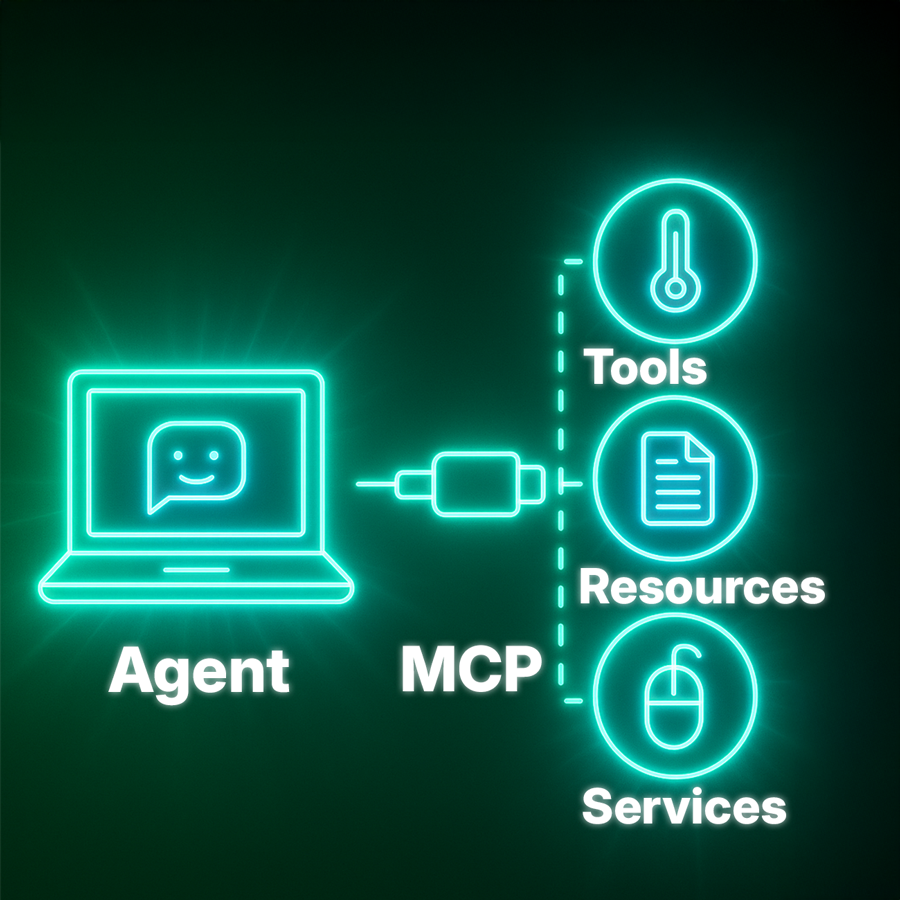
Calling for backup
The agent can also call on other agents when needed; this is known as a MAS, or Multi-Agent System, where several agents interact in the same environment to achieve a common goal. They can collaborate, communicate, divide roles or even correct each other.
To produce an analytical report, a lead agent can coordinate a whole chain of agents (centralised architecture): agent 1 drafts the outline, agent 2 researches sources, agent 3 writes the content, agent 4 checks quality and agent 5 formats everything. Result: a complete deliverable is generated in a few minutes where it used to take several people several days.
There are different ways to organise a MAS, such as:
Pipeline architecture
Each agent is responsible for a specific step; once its task is done it passes the result to the next agent.
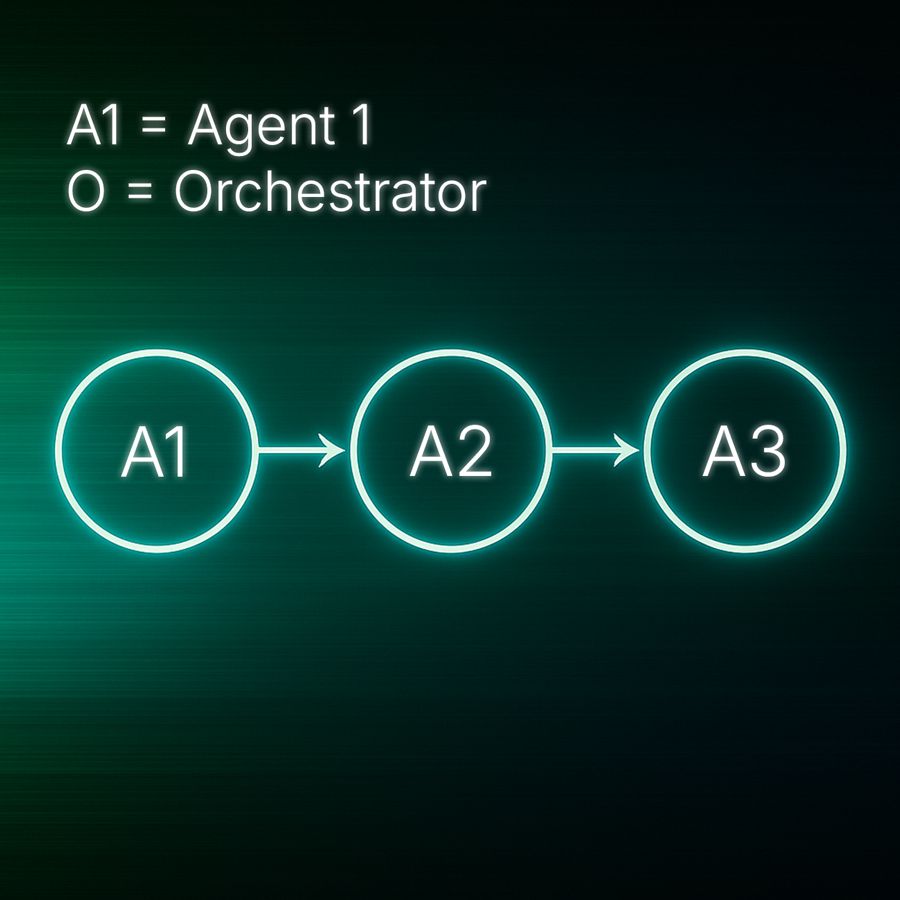
Centralised architecture
A lead agent acts as conductor, coordinating operations; the other agents follow its instructions.

Decentralised architecture
AI agents make decisions locally, communicate, cooperate and organise themselves without central supervision.
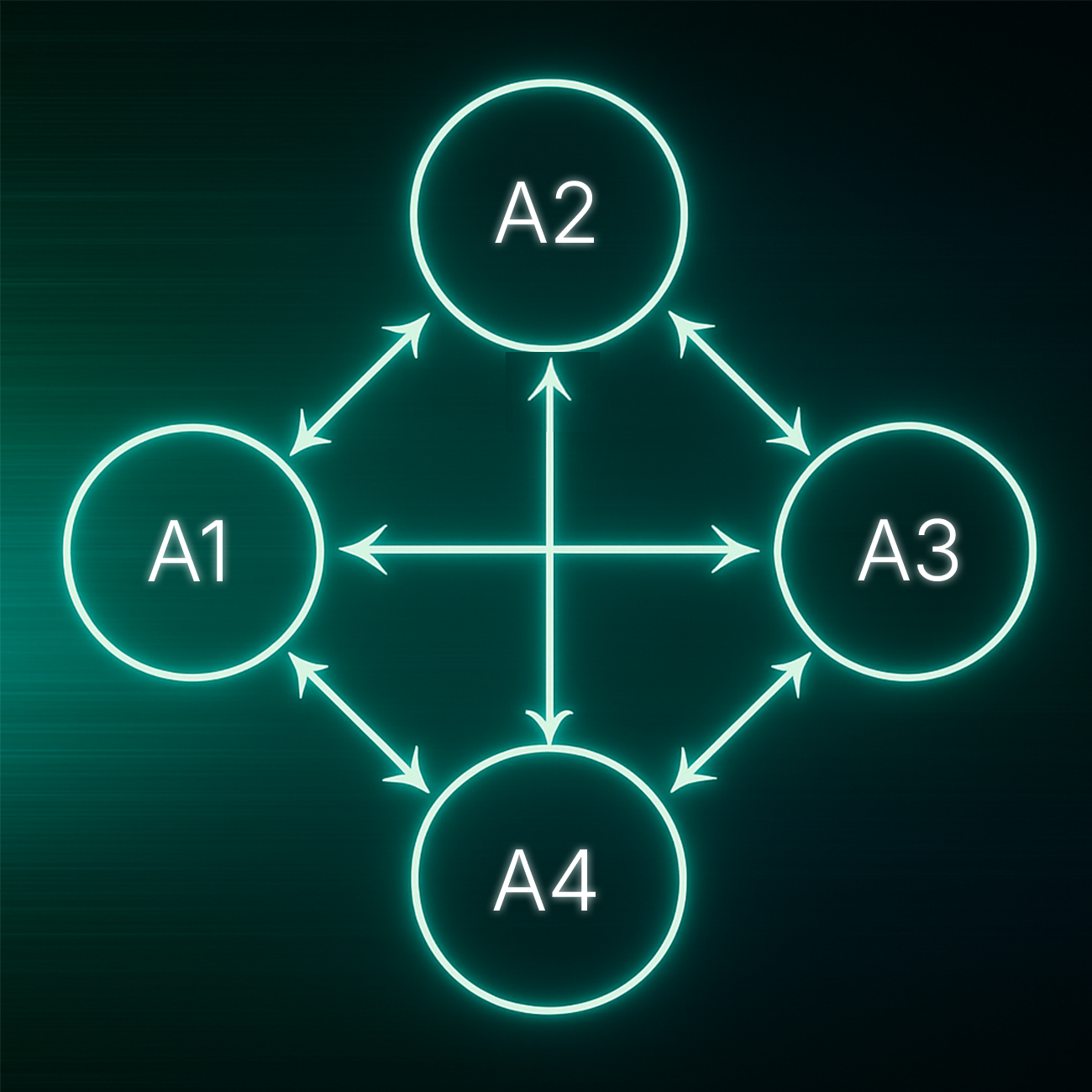
Hierarchical architecture
Tiered organisation: some agents make global decisions (strategic level) while others execute (operational level).
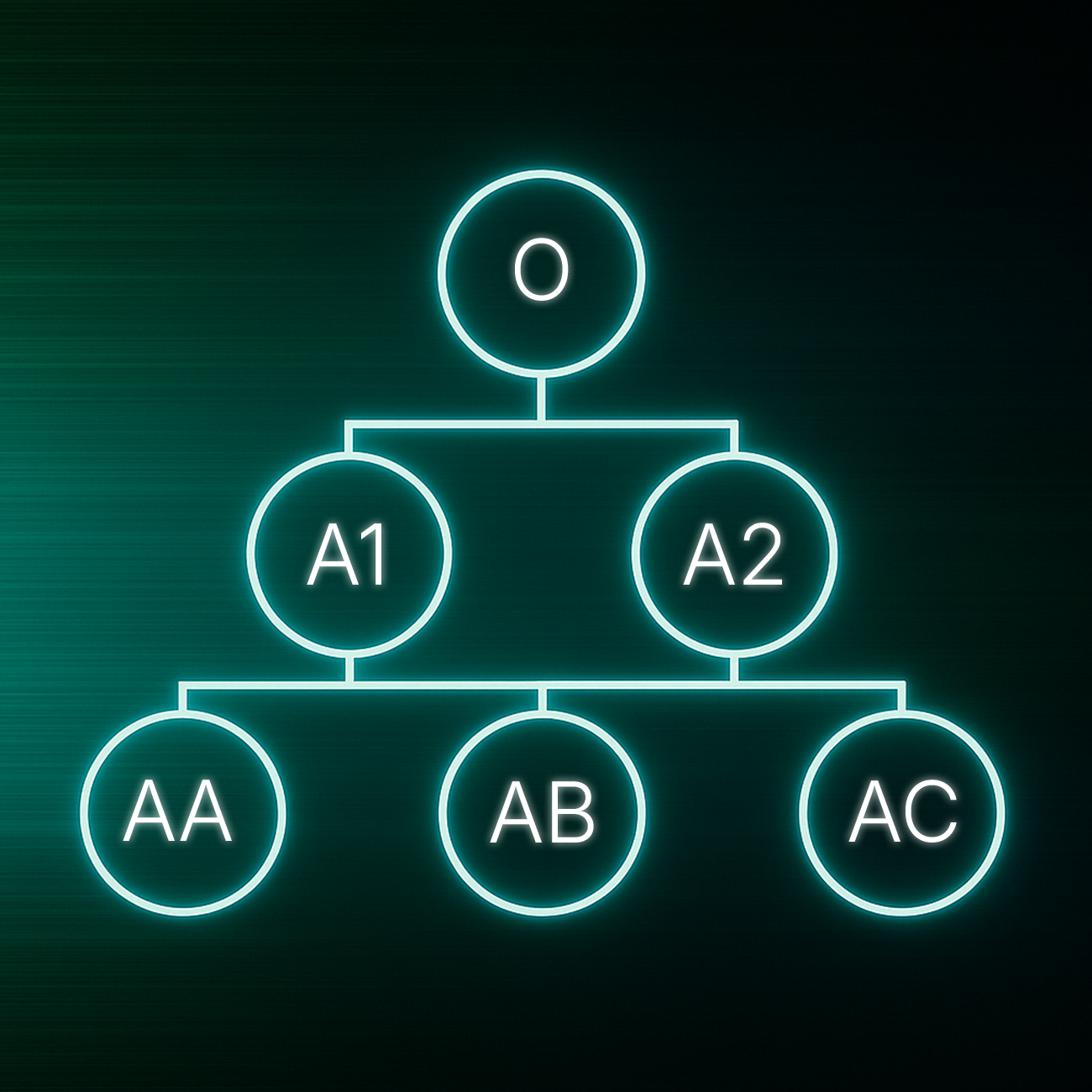
What if your next ally had a code name?
The ultimate weapon for your productivity
“We believe AI agents are about to transform the world. Every major technological revolution up-ends how we live and work. In its agentic form, AI has the potential to amplify human capabilities in ways we are only beginning to understand.” (Agentic Artificial Intelligence: Harnessing AI Agents to Reinvent Business, Work and Life by Pascal Bornet)
In their book, Pascal Bornet and his co-authors present data from 167 companies, revealing significant customer benefits linked to the use of AI agents:
Process acceleration: +30 to 90 %
Cost reduction: –25 to 40 %
Sales increase: +50 %
Customer satisfaction: +20 to 40 %
These results confirm that well-designed and deployed AI agents can become a true lever for transformation and a lasting competitive advantage for companies.
The age of AI agents is only just beginning — but it is already shaping up to be one of the great technological revolutions of our time.
Productivity gains
Scalability
Accessibility
Business models
Interoperability
Continuous improvement
No impossible missions, only tangible results
🎯 Marketing campaign manager
Product launch, targeting, messaging, channel selection: AI agents orchestrate an entire campaign autonomously. Meanwhile, the team can focus on strategy.
💻 Developer copilot
A natural-language intent is all it takes: the agent writes code, runs tests, prepares deliverables and streamlines teamwork.
🧪 Medical research partner
Able to explore new therapeutic avenues, it structures the steps, suggests directions and drafts the documents needed for evaluation or publication.
🛍️ E-commerce architect
From a simple product inventory it generates a full site with content, pricing, logistics and integrated user experience.
🔬 Scientific research assistant
It suggests experimental protocols, organises tests and automates repetitive steps, letting researchers focus on analysis.
💰 Personal finance advisor
Budget analysis, goal setting, trade-offs: the agent builds a financial strategy tailored to the user’s profile and priorities.
📆 Daily-life coordinator
Calendar, invitations, confirmations, logistics: it organises personal or professional events with responsiveness and no friction.
📦 Stock manager
It continuously monitors inventory levels, anticipates shortages and triggers orders at the right time without human intervention.
Bring in the agent
AI agents are particularly useful in dynamic environments where you need to adapt in real time.
However, they’re not the answer to everything; for simple or repetitive tasks, a traditional system is often more efficient.
It’s in situations where autonomy, responsiveness and interaction with humans are key that AI agents really shine.
And very often, the user isn’t even aware they’re interacting with an agent — it works behind the scenes.
You want to book a room for a meeting:
If you already have a site with a simple form (“date”, “time”, “desired room”), a traditional system is enough. The task is clear, quick and needs no adaptation.
But if you say: “I’m looking for a room next week for 12 people, with a projector, ideally near the cafeteria, and I’d rather avoid Monday morning,” then an agent becomes relevant. It has to understand several constraints, juggle preferences, explore multiple options and propose a suitable solution.
The age of agents is now
Far from being a passing fad, AI agents embody a profound evolution in artificial intelligence. For the first time, technologies can perceive, reason and act autonomously, following a goal-oriented logic rather than a purely answer-oriented one.
It’s not about replacing humans but extending their reach: lightening operational workload, speeding up decision-making and imagining smarter, more responsive, more personalised uses.
The story is only beginning, but the foundations are already solid and the first deployments convincing. The agent is no longer fiction; it’s a new tool that pushes us to re-think our interfaces, our processes, our collaboration with AI — and perhaps even our ways of working.
At Neovision, we’re ready to make this turn and to accompany you.
AI agents are here; it’s up to us to make something great of them. And you, which agent will you deploy tomorrow?

